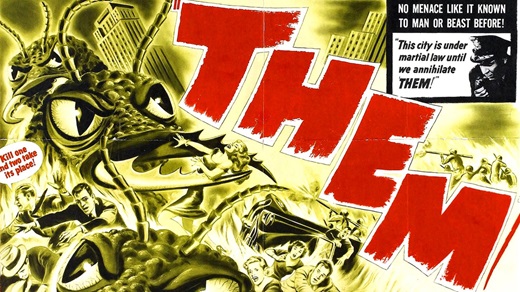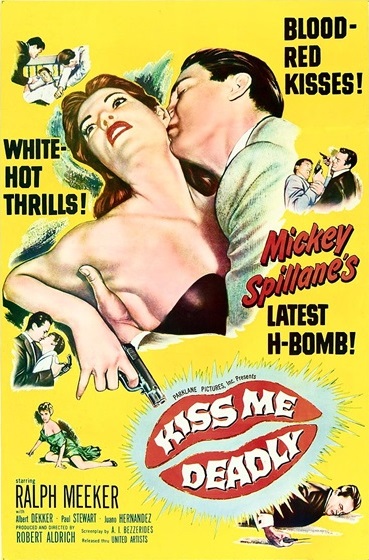|
-
Music
Source A
We learned more from a three-minute record, baby, than we ever learned in school.
A line from Bruce Springstein’s
No Surrender – a nostalgic song about his youth in the 1960s.
Springstein shares another memory of life in 1950s New Jersey in:
My Hometown.
It is hard to overstate the HUGE effect that pop music
had on the culture and attitudes of the times, particularly on young people.
Rock 'n' Roll: The emergence of rock 'n' roll in the 1950s, with artists like Elvis Presley (his first hit was
Heartbreak Hotel, 1956), Chuck Berry (Maybellene, 1955), and Little Richard (Tutti Frutti, 1955), revolutionized music and youth culture. Rock 'n' roll horrified staid, middle-class America, and was condemned by
preachers such as Rev
Jimmy Snow as 'the devil's music'. California
Sound: The Beach Boys (Surfin USA,
1963) captured the positivity and fun aspects of being young.
Folk and Protest: In the 1960s, folk music and protest songs by artists like Bob Dylan (Blowin' in the Wind, 1963) and
Simon & Garfunkel (America,
1968) became popular, reflecting the era's social and political activism.
British Invasion: The arrival of British bands, notably The Beatles (Love Me Do, 1962) and The Rolling Stones (Satisfaction,
1965), had a huge impact on American music and culture in the mid-1960s.
Music Festivals: The idea of music festivals as celebrations of love and peace began in 1967 with the Monterey International Pop Festival, which featured Jimi Hendrix, Janis Joplin, and The Who. The most famous was
Woodstock
in 1969.
-
The concept of ‘teenagers’ as a distinct demographic
emerged, with their own fashion, music, and language.
Rebellion: Teen alienation – disenchantment
and a rejection of middle class materialism & the rat race – found its way into popular culture, exemplified by movies like
Rebel Without a Cause
(1955), books like Catcher in the Rye, and songs like
My Generation
(1965).
Teenspeak: good things were
‘far-out’ (1954), ‘a gas’ (1955), ‘with it’ (1959), ‘swinging’ (1957), but
if it was ‘dullsville’ or ‘squaresville’ (1956) you would ‘split’ (1956)
saying ‘see you later, alligator’ (1954) … you weren’t a ‘cube’ (1959).
-
Students for a Democratic Society:
formed 1962 with the Port Huron Statement – a denunciation of racism, consumerism
and the Cold War. Through the 1960s the SDS organised student sit-ins and demonstrations protesting about
Civil Rights, and Vietnam. In 1969, a faction called the Weather Underground organised riots in Chicago (called the ‘Days of Rage’) and bombed banks and government buildings Hippies & Drugs: In the late 1960s, the hippy counterculture emerged, centred on San Francisco and based around peace, free love and ‘psychedelic’ experiences. In 1967 the American psychologist Timothy Leary – speaking at a human ‘be-in’ San Francisco – advised young people to “tune in, turn on, and drop out”.
Not all hippies took drugs, but many would smoke pot or take LSD.
-
Sports and Leisure
Major Sports: Baseball, football, and
basketball continued to be hugely popular.
Leisure Activities: The rise of
middle class led to increased participation in activities such as bowling,
golf and jogging. ‘The family’ became an important focus, with family
road trips, camping trips, holidays and BBQs.
-
Television
Television became the dominant form of media
entertainment, with most households owning a ‘box’ by the end of the 1950s,
with colour TV becoming affordable from the mid-1960s. The television
replaced the fireplace as the focal point, not only of the living room, but
of family socialisation, and played a major role in national
attitude-forming.
Popular Shows: TV fed families an attractive diet of variety shows and panel games, breakfast-time television (1952) and even pay television (1956).
'Sitcoms' such as
I Love Lucy
and Leave It to Beaver not only entertained – they influenced how people thought and how they lived. Children got 'square eyes' watching wholesome shows such as
Captain Kangaroo and
Mr Rogers' Neighbouhood.
-
Art and Literature
Abstract Expressionism: Artists like
Jackson Pollock and
Mark Rothko.
Pop Art: Artists like
Andy Warhol and
Roy Lichtenstein.
Beat Generation: Writers like Jack Kerouac, Allen Ginsberg, and William S.
Burroughs challenged convention and inspired the countercultural movements
of the 1960s.
Marshall McLuhan: coined the
phrase introduced 'the medium is the message',
He argued that civilisation had been
revolutionised by the move from spoken to written thought, then from
hand-writing to print … and foresaw that it would be revolutionised again by a move to
‘electronic interdependence’ and ‘the global village’.
-
Fashion
The 1950s: were marked by conservative
fashion, with men in suits and women in feminine/domestic dresses.
The 1960s:
'60s fashions saw the ‘Mod’ movement, featuring bold
colours, mini-skirts, and more casual styles. The
hippie movement
introduced tie-dye, bell bottoms, and unisex clothing.
-
Films!
Drive-in movies were popular in the 1950s, with multiplexes
developing in the 1960s. Cinema moved with the technology, as directors
experimented with Cinerama curved-screen (1950), CinemaScope wide-screen (1953)
and 3D (1955) filming, but a more significant long-term development was the
appearance of videotape (1953).
1950s Themes: Societal anxieties, such
as the Cold War, teenage rebellion, and shifting social norms, dominated 1950s
films, from films about alien invasions to 'Film Noir' detective thrillers.
'New Hollywood': The late 1960s saw the start of the ‘New Hollywood’ films aimed at younger audiences, with shocking scenes and themes, anti-heroes, ‘gritty’ feel and stylistic interludes – films such as
Bonnie & Clyde (1967),
The Graduate (1967),
Butch Cassidy and the Sundance Kid (1969) and
Easy Rider
(1969).
|
Going Deeper
The following links will help you widen your knowledge:
Basic account from
BBC
Bitesize
The film Pleasantville - an allegory of the transition in
America from the certainties of the 1950s to the turbulence of the 1960s, and the
tensions it aroused - includes many stereotyped scenes of 1950s life:
-
breakfast
-
underwear
- book
scene
- the
Mural
YouTube
Daily Life in the 1950s
and in the 1960s
Source B
The most brutal, ugly, degenerate, vicious form of expression it has been my misfortune to hear…. It is sung, played, and written for the most part by cretinous goons and, by means of its almost imbecilic retardation and sly, lewd dirty lyrics,
it manages to be the martial music of every side-burned delinquent on the face of the earth
The singer Frank SInatra talking about rock 'n' roll
music, 1957.
Source C

'Them'
(1954), a film about an invasion of giant ants, was one of many movies which reflected American
fears about the Cold War.
Source D

The dark 'Film Noir' genre played to society's awareness of a
rotten underbelly they were choosing to turn a blind eye to. 'Kiss Me,Deadly' (1956) doubled down on this, because “the great whatsit” causing all the trouble
turns out to be, in fact, an atomic bomb.
Consider:
1. Watch the clip from 'Them', noting the
different social stereotypes portrayed by the actors.
2. Listen to Rev
Jimmy Snow preaching against rock 'n' roll; why does he concemn it? Go
through this webpage and isolate all the aspects of the new 'youth
culture' of the 1950s and 1960s that staid middle-class America would
find discomforting.
3. Go through this webpage and make a list of
all the factors that were driving the rapid changes in popular culture
in the 1950s through 1960s.
4. Write an explanation of the key changes in
popular culture in the 1950s and 1960s.
- AQA Exam-style
Questions
4. Describe two problems of the revolution in youth culture in the 1950s
and '60s.
5. In what ways were the lives of Americans affected by changes in popular culture after the
Second World War?
|

